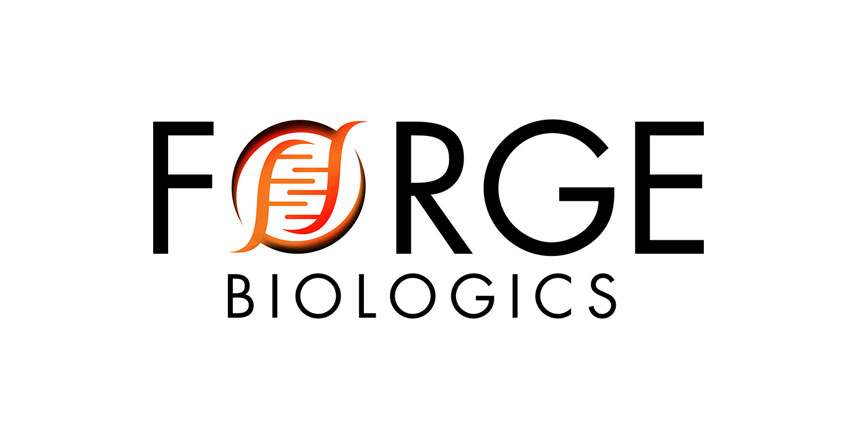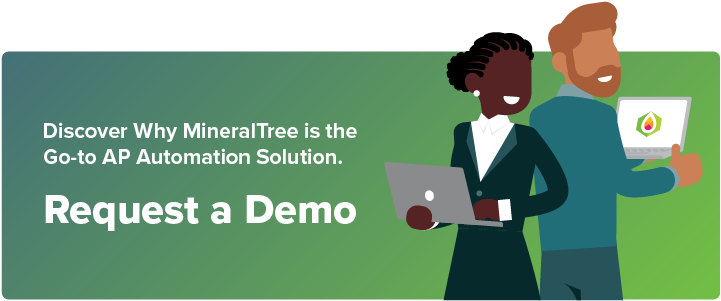You already understand how accounts payable (AP) automation would benefit your organization. Now you’re ready to evaluate solutions, schedule product demonstrations, and determine what makes sense for your business. In this blog, we will explore how your business can choose the right AP automation solution, questions to ask when evaluating different solutions, and how to implement AP automation successfully.
What to Ask When Evaluating AP Automation Solutions
It’s up to you to determine the best solution for your organization and identify potential weaknesses that might actually decrease efficiency. Doing your homework will mitigate the risk of the product not living up to your expectations or costing you in hidden fees.
How do you know which solution is the best fit? Ask these 8 key questions when demoing and comparing AP automation solutions.
1. Does This Solution Address the Challenges of My AP Process?
In order for a solution to address your challenges, you need to share all the details of your process. Map out your accounts payable workflow from receiving an invoice all the way to payment execution. Send this workflow to the AP automation solution provider and ask them to use this as the flow for the demo. This is the best way for you to understand what automation will look like at your organization.
Some providers create workarounds so their solution appears to fit your process. Make sure that key components in your process – a specific field, invoice approval rule, etc. – will work as it should. There are often areas where you can adapt your processes without issue but they may require more work for your team.
If your organization is rapidly growing, ask how the solution can support a larger volume of invoices and payments in the future. See if there are examples of clients that have successfully used the software in support of their growing business.
2. Is this Solution Easy-to-Use and Does it Integrate with My Accounting Solution and Business Bank Account?
There are two types of products on the market: file-based integrations and API-level integrations. You need to understand the implementation process for each and anything you’ll need from your IT team.
File-based integrations require manual work on your end to export and import files, and are often difficult to implement. They require manual data entry and usually do not include invoice capture.
API-level integration means that there is an automatic synchronization with your accounting system. Unfortunately, not all API integrations include a two-way sync. This is very important as this synchronization ensures invoice and payment data flows between the accounting system and the solution. Be careful to understand what syncs and what doesn’t.
3. Does this Solution Automate All Aspects of the Invoice-to-Pay Process?
There are various products on the market that range from document management to invoice workflows to payment execution only. When it comes to true accounts payable workflow automation, ensure that the solution covers all four components: invoice capture, invoice approval, payment authorization, and payment execution.
Invoice Capture eliminates the need to manually key invoice data into your accounting system. Some solutions rely solely on OCR technology. Others use a combination of OCR technology and human review to ensure a 99.5% accuracy rate. Some solutions extract header and line level information. Others don’t provide this type of service or charge extra.
Invoice approval reduces the time spent finding and tracking down the appropriate invoice approver. Solutions will enable AP staff to automatically route invoices to department heads based on vendor name, dollar amount, or invoice coding. Do not assume the solution can meet your complex needs. Ask about simultaneous approvals, hierarchical approvals, limits on the number of approvers per invoice, or additional invoice approver user fees.
Payment authorization enables your CFO to easily review and process payments. You’ll want a segregation of duties in place so your Accounting Manager can never process payments he/she initiates (prevents fraudulent activity). And this process should be accessible on-the-go. Ensure that the solution supports dual payment authorization if your company policy requires two signatures above a certain dollar threshold.
Payment execution enables businesses to process vendor payments of all types. For starters, ask the solution provider what payment methods are available. Ensure they have the payment types you would like to use, for example check, ACH, corporate card, single-use virtual card, and wires. For paper checks, ask if they use a settlement account and if they have the capability to send the check with your business name, signature and address on them.
4. What Does the Implementation, Training, and Support Look Like?
There are two types of software solutions: on-premise and cloud-based. On-premise software is installed on a user’s computer. Whereas cloud-based solutions are easily accessible via the Internet.
On-premise solutions often require a consultant or IT resource. These types of solutions also have a much longer implementation period and are harder to update.
Cloud-based software can be up and running in a few days and do not require any IT resources. Product issues, bug fixes, or future product updates are easily implemented and require little work on your end.
In addition to product implementation, evaluate the onboarding and training process. Ask who will be your main point of contact after the deal closes, who will train your entire team, and what the customer support team looks like. You should have a dedicated Customer Success Manager and easy access to email and phone support at no additional charge.
If you are integrating with an existing system, such as your ERP/accounting system, ask how the integration is set up and if you need to involve your IT team in the process. What resources do you need on your end?
5. Does this Solution Reduce or Prevent Internal and External Fraud?
Look for solutions that offer comprehensive internal controls including built-in segregation of duties, two-factor codes, hierarchical approvals, payment limits, Positive Pay integration, and protections to minimize fraud risks. Confirm that the solution provider has all of these features and ask to see how they work in the demo.
6. Does the Solution Help Build the Business Case to Management?
The answer to this question should always be ‘yes’. The sales professional should arm you with a full explanation of costs, a list of manual tasks that will be eliminated, and an expectation of time and cost savings. Ask them to walk you through an ROI assessment in a follow-up call.
7. How Does this Solution Differ From the Competition? What Does the Product Roadmap Look Like?
While these two questions might seem unrelated, they are actually linked. Listen to what the solution provider says about their differentiating features and use those to determine the best fit for your organization. A trusted solution provider should be able to tell you whether their solution is a good fit for you, or if another provider may be better suited.
When it comes to the product roadmap, compare overall plans and future functionality. See how willing the provider is to accept and incorporate user feedback into their roadmap. You want the best functionality and you want an organization that has a well-thought-out product roadmap.
8. What Are the True Savings and Value of this Solution?
Be direct and ask all solution providers this question last. See what they say after learning your workflow and processes. Generic answers might mean the provider does not fully understand your accounts payable process.
Ensure the price of the solution is in line with the potential benefits. Understand all the cost line items. Charges by invoice and payment quantity are standard. Charges for document storage or multiple users are not. Compare how much time and money you will save in labor and fulfillment materials for the price. Ask what happens if you exceed your monthly invoice and payment allowance. In the event your organization grows quickly and you need to handle larger volumes, make sure you understand the next tier of pricing.
Solutions that process vendor payments by single-use virtual card or corporate credit card can earn you rebates. The solution provider should be able to run your vendor list against their database and estimate your potential annual earnings. Be sure to ask about vendor enrollment and onboarding services – the solution provider should handle this process for you!
After the demo, you should feel confident in whether you want to move to the next stage with this vendor. But if you are still unsure of what your process will look like, ask this question: I’m interested in your product, but I need to participate in a trial or pilot. Can we make that happen?
How to Implement AP Automation Successfully
Making the move to AP automation is a big step. And it’s up to you to ask all the right questions and evaluate multiple solution providers. Remember, you’re making an investment on a product that should grow with your business. Don’t settle if it’s not the best fit. Implementing AP automation successfully requires a comprehensive approach that encompasses planning, execution, and change management. Here are some of the top things to consider when implementing AP automation.
- Evaluate and understand your current AP processes and needs
- Build a business case for AP automation
- Get CFO and stakeholder buy-in
- Define the specific requirements
- Choose an AP automation solution
- Develop a detailed implementation plan
- Test the AP automation solution
- Train employees
- Continuously monitor performance
How to Choose the Right AP Automation Solution for Your Business
Choosing the best accounts payable software solution for your business is a crucial step in optimizing your financial operations. Regardless of whether you’re a small business or a large enterprise, automating your AP processes can significantly enhance efficiency, reduce errors, strengthen supplier relationships, and improve cash flow management.
MineralTree’s cloud-based, comprehensive AP automation solution is designed to streamline the entire AP process, from invoice capture to payment authorization. We offer seamless integration with your existing systems, including QuickBooks, NetSuite, JD Edwards, and other ERPs. MineralTree can help you triple your current invoice processing volume while reducing your total cost per invoice by up to 80%, allowing your AP team to scale without adding new personnel.
If you’re ready to revolutionize your AP processes and harness the advantages of AP automation, contact us for a free demo.
Case Study: How Forge Biologics Evaluated AP Automation Solution to Help with Growth

Forge Biologics was rapidly growing, but its manual AP processes slowed it down and made maintaining good relationships with suppliers difficult. They decided it was time to implement an AP automation solution that provided flexible and compatible sync with their existing QuickBooks software.
That’s when they chose to leverage MineralTree’s AP automation solution. MineralTree has significantly helped Forge Biologics improve efficiency, processing over 90% of its invoices electronically, with virtual cards accounting for over 10% of its total AP spend. This has strengthened supplier relationships and generated substantial cash-back rebates, which have offset the cost of the platform and reduced the need to hire additional AP staff.
AP Automation Frequently Asked Questions
Is AP Automation Worth It?
Simply put, yes! AP automation is worth it for businesses of all sizes as it can help reduce costs, improve efficiency, reduce errors from manual data entry, improve supplier relationships, and improve cash flow. In fact, for online lab management platform, Quartzy, they were able to earn $100,000 in cash back rebates just by automating their AP process and streamlining payments.
What are AP Automation Solutions?
An AP automation solution is the software that digitizes the entire accounts payable process, including invoice capture and coding, routing and approvals, and payment execution. An example of an AP automation solution is MineralTree.





